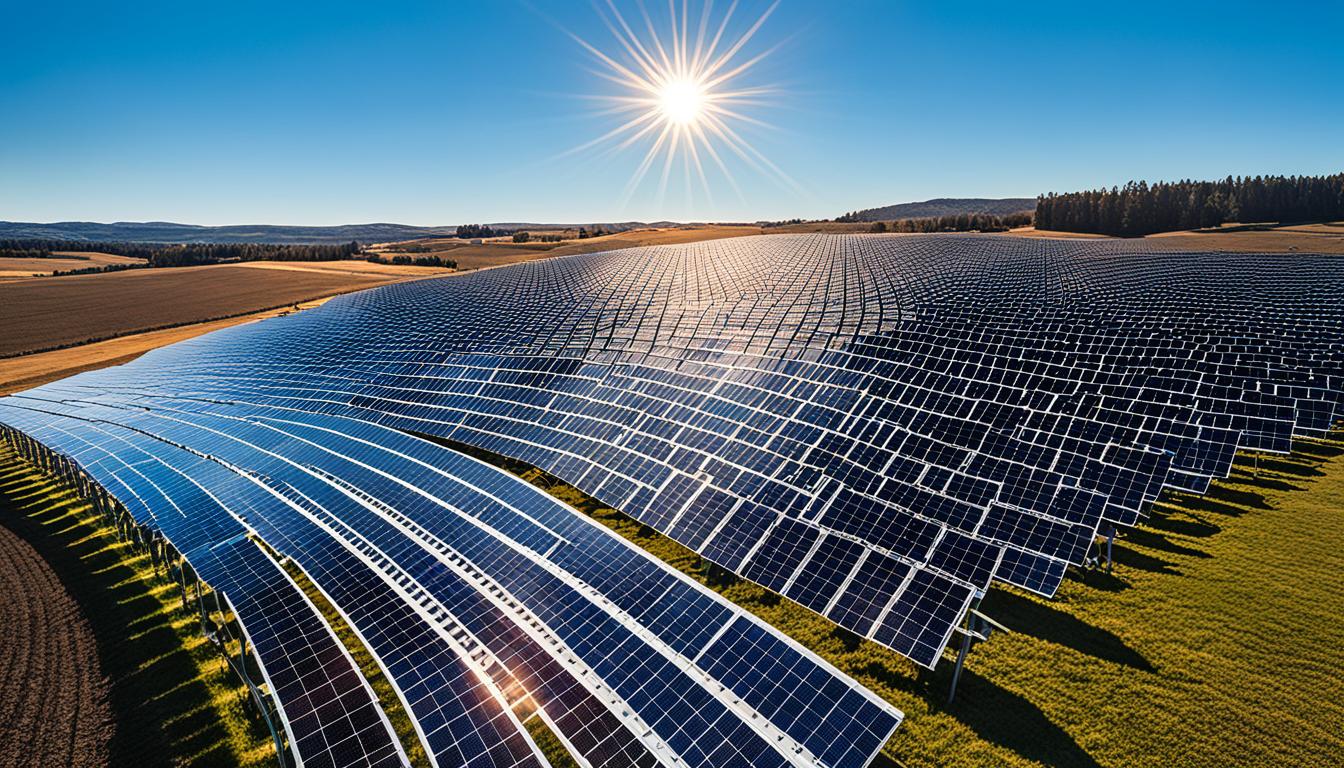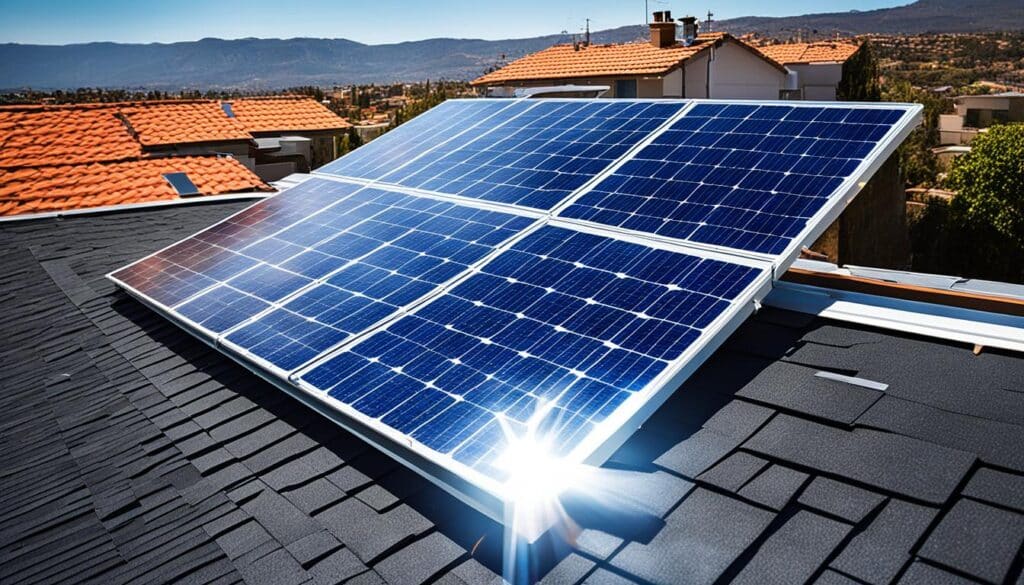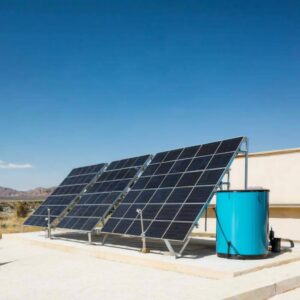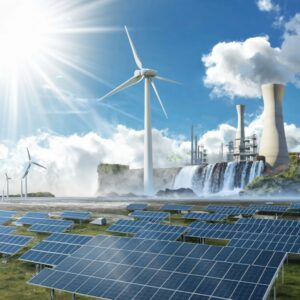
Welcome to our in-depth exploration of solar energy and its intriguing nature. In this article, we will delve into the fundamental concepts of potential and kinetic energy within the realm of solar power. By understanding these concepts, we can gain valuable insights into how solar energy works and its various applications.
Solar energy, often hailed as a sustainable and renewable energy source, can be classified into two distinct types of energy: potential energy and kinetic energy. Potential energy refers to the stored energy that solar radiation possesses, while kinetic energy is the energy produced when solar radiation is converted into motion or electrical energy.
By examining the dynamics of potential and kinetic energy, we can better comprehend how solar energy is converted and utilized in different applications. So, let’s embark on a fascinating journey into the intriguing world of solar power.
Key Takeaways:
- Solar energy can be classified as potential energy and kinetic energy.
- Potential energy refers to the stored energy within solar radiation.
- Kinetic energy is generated when potential energy is converted into motion or electrical energy.
- Understanding the dynamics of potential and kinetic energy is essential for optimizing solar energy systems.
- Exploring the nature of solar energy unveils its immense potential for sustainable and renewable energy solutions.
Understanding Potential Energy in Solar Energy
Potential energy plays a crucial role in solar energy systems, as it represents the energy that is stored within solar radiation. When sunlight reaches the Earth’s surface, it interacts with various materials, such as solar panels or water in solar thermal systems, leading to the conversion of solar radiation into potential energy.
In solar panels, for instance, the absorbed sunlight undergoes a process called the photovoltaic effect, where it is converted into electricity. This conversion is made possible by the utilization of semiconducting materials, such as silicon, which enable the generation of an electric current when exposed to solar radiation. The potential energy stored within the sunlight is thus transformed into a usable form of energy that can power homes, businesses, and even entire communities.
“The photovoltaic effect revolutionized the utilization of solar energy by providing a practical and efficient means of converting potential energy into electricity.” – Dr. Sarah Miller, Solar Energy Expert
In addition to photovoltaic cells, solar energy can also be harnessed using solar thermal systems. These systems utilize the absorbed heat from solar radiation to generate potential energy, which can be stored and used for various purposes. For example, the absorbed heat can be stored in a thermal storage system and used later for heating purposes, providing a sustainable alternative to conventional heating systems.

Solar thermal systems can also convert the absorbed heat into electricity through the use of steam turbines. In this process, the potential energy stored within the solar radiation is converted into kinetic energy, which drives the motion of the turbine blades, ultimately generating electricity. By effectively capturing and utilizing the potential energy contained in solar radiation, solar thermal systems offer an efficient and renewable method of electricity generation.
The understanding of potential energy is essential for harnessing and maximizing the efficiency of solar energy systems. By optimizing the conversion and storage of solar radiation, we can unlock the full potential of solar energy and contribute to a sustainable and environmentally friendly future.
Exploring Kinetic Energy in Solar Energy Applications
Kinetic energy plays a crucial role in harnessing the power of solar energy and converting it into usable electricity. By understanding how potential energy is transformed into motion, we can optimize solar energy systems for efficient electricity generation.
One of the most common applications of kinetic energy in solar energy is through photovoltaic cells. When solar radiation reaches the surface of a solar panel, it excites electrons, creating a flow of charged particles and generating an electric current. This electric current can then be utilized to power electrical devices or stored in batteries for future use.
In addition to electricity generation through photovoltaics, kinetic energy can also be harnessed in solar thermal systems. These systems absorb the heat from solar radiation and utilize it to create motion in steam turbines, which generates electricity. This conversion of heat energy into kinetic energy allows for the efficient production of electricity from solar power.
By effectively utilizing kinetic energy in solar energy applications, we can maximize the potential of solar power and contribute to sustainable electricity generation. By understanding the mechanisms involved in converting potential energy into motion, we can drive innovation in renewable energy and reduce our dependence on fossil fuels.
| Kinetic Energy Applications in Solar Energy | Description |
|---|---|
| Photovoltaic Cells | Converts solar radiation into electric current through the excitation of electrons. |
| Solar Thermal Systems | Utilizes absorbed heat from solar radiation to create motion in steam turbines, producing electricity. |
Through the effective utilization of kinetic energy, we can unlock the full potential of solar energy as a clean and renewable source of electricity. It is essential to continue researching and developing innovative technologies that maximize the conversion of potential energy into motion, ensuring a sustainable and greener future.

Conclusion
In conclusion, solar energy is a remarkable source of both potential and kinetic energy. The potential energy of solar radiation, stored within sunlight, holds immense power that can be harnessed for various applications. Through conversion and utilization, solar energy can be transformed into electricity and used for heating purposes.
On the other hand, the conversion of potential energy into motion gives rise to kinetic energy, which is a key aspect of solar energy applications. This kinetic energy is responsible for the generation of electricity through photovoltaic cells, as well as the movement of steam turbines in solar thermal systems. By understanding and harnessing the combined power of potential and kinetic energy, we can fully unlock the potential of solar energy.
Solar energy’s versatility and renewable nature make it a vital component of sustainable energy solutions. By utilizing the power of solar energy, we can contribute to a greener and more sustainable future. Through advancements in technology and a deeper understanding of solar energy, we can continue to develop innovative applications and further optimize its potential. Let us embrace solar energy and its potential for a brighter, cleaner tomorrow.
FAQ
What is solar energy?
Solar energy refers to the energy derived from the sun’s radiation, which can be harnessed for various purposes.
How does solar energy work?
Solar energy works by capturing the sun’s radiation and converting it into usable forms of energy, such as electricity or heat.
What are the different types of solar energy?
Solar energy can be classified as either potential energy or kinetic energy, depending on whether it is in a stored or motion form.
What is potential energy in solar energy?
Potential energy in solar energy refers to the stored energy within solar radiation, which can be converted and utilized for various purposes.
How is potential energy converted into usable energy?
Potential energy in solar energy is converted into usable energy through processes such as the photovoltaic effect in solar panels or the generation of heat in solar thermal systems.
What is kinetic energy in solar energy?
Kinetic energy in solar energy refers to the energy produced when potential energy is converted into motion, such as the generation of electricity through photovoltaic cells or the movement of steam turbines in solar thermal systems.
How is kinetic energy harnessed in solar energy applications?
Kinetic energy is harnessed in solar energy applications through the generation of electricity using photovoltaic cells and the utilization of motion in steam turbines to produce electricity in solar thermal systems.






